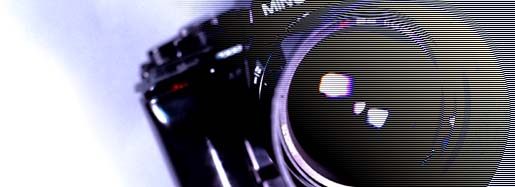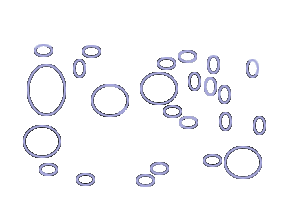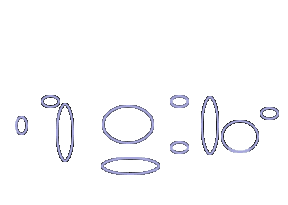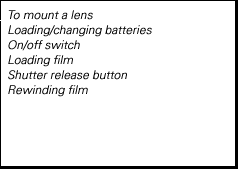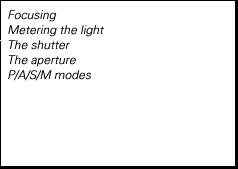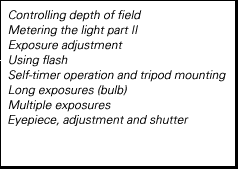Care and storage
- Always keep the camera in its case with the lens capped when not in use, or with a body cap on when a lens is not attached.
- No part of the camera should be forced at any time.
- Never subject your camera to shock, high heat, high humidity, water, or harmful chemicals. Be particularly careful not to leave it in the glove compartment or other places in motor vehicles where it may be subjected to high temperatures. The 9000 is a professional camera and thus built with professional use in mind; it can take large amounts of abuse, and can be used in rain et cetera, but remember that it's still just a camera and your mileage may vary.
- Never lubricate any part of the camera body or lens. Leave lubrication of the internals to professionals.
- Never touch the shutter curtain or the inside parts of the body, or clean them with compressed air. Doing so may impair their alignment and movement.
- External camera surfaces and the lens barrel -- but not glass surfaces -- can be cleaned by wiping with a dry or silicone-treated cloth.
- Never touch lens or eyepiece surfaces with your fingers. Whisk away loose matter with a blower brush. To remove stubborn spots, use a sheet of photographic lens tissue. If necessary, tissue may be moistened with one drop of lens-cleaning fluid. Never drop fluid directly on glass surfaces.
- Minolta recommends that you have your camera cleaned once a year at an authorized Minolta service facility. Repair facilities tend to say that this isn't necessary, however, if the camera isn't very heavily used.
- When storing the camera for more than two weeks, remove the batteries and keep it in a cool, dry place away from dust or chemicals, preferably in an airtight container with a drying agent such as silica gel.
- The operating range for the LCDs is from -20 to +50 degrees Celsius (15 to 120 degrees Fahrenheit). At temperatures outside this range, response time and contrast will change, making displays difficult to read. At very high temperatures, the display will temporarily turn black. In either case, display should return to normal after a short period of time away from the extreme temperature.
- The LCDs should last approximately ten years. Then, they may get black in the corners; I have never heard of a LCD being all black, though. Thus, it's more of a cosmetic issue. When replacement is needed, contact your nearest authorized Minolta service facility. Then hope that they have any in stock, as 9000 parts are getting scarce around the world. A solution may be to buy a broken 9000 and cannibalize it for parts -- not all LCD screens turns black.

